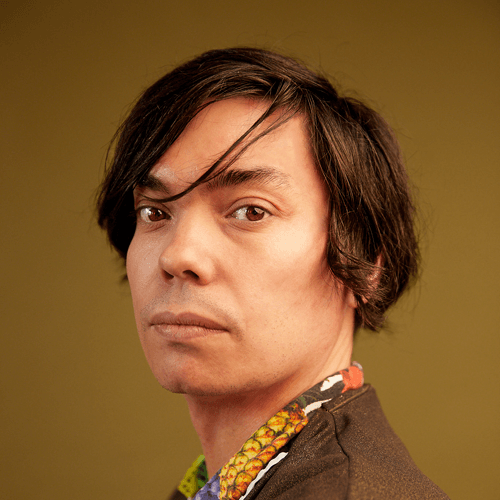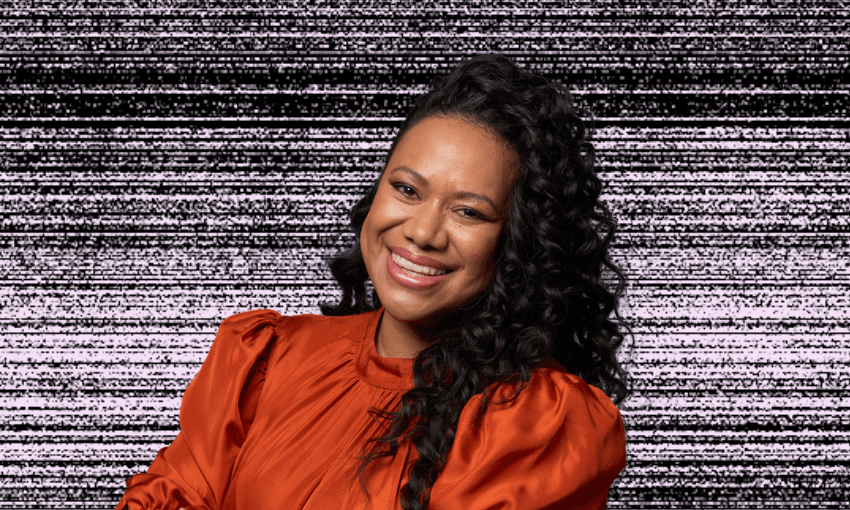Duncan Greive and Stewart Sowman-Lund attended Dua Lipa’s Future Nostalgia tour in Auckland this week. Both came away with a profound sense of joy.
Pop music’s back in town, baby! After two-and-a-half years of the pandemic, one of the biggest and most anticipated pop acts of the year arrived in Auckland this week: Dua Lipa. Touring her multi-Grammy nominated album Future Nostalgia, which was released in the very earliest days of the Covid-19 outbreak, the two sold out Spark Arena gigs have been a long time coming for fans. And they were worth the wait.
The Spinoff publisher Duncan Greive and live updates editor Stewart Sowman-Lund, both pop music obsessives despite their serious job titles, exchanged a series of frantic emails in an effort to hold onto the happiness they experienced at the concerts this week.
The build up
DUNCAN: This was my first big capital P Pop show since the lowercase p pandemic, and I had honestly forgotten what a beautiful candy floss rush it is just walking to Spark Arena with that electric energy – all these kids dressed up and out of their skin with excitement. It was maybe 80% wāhine, and def teen heavy – but there were also cute little pockets of couples my age and over, on their own, so you really felt like there was this community of pop obsessives here to commune with someone who has become among the best in the world at this specific thing right now.
I was gutted to miss most of Tkay Maidza, but the glimpse I got had beautiful, ebullient energy which got the room going. And I loved the thought which had gone into the pre-show music – Stardust and Jamiroquai and whole bunch of 90s/00s dance music which really spoke to Dua Lipa as a very English artist.
The princess of pop?
STEWART: People throw around monikers like that a lot these days (arguably too much) and I’d heard it referenced a few times in relation to Dua Lipa. Honestly though, it sort of feels right? It could just be a symptom of her 2020 album Future Nostalgia wearing its pop queen influences very much on its sleeve – Kylie, Madonna, a touch of Gaga – but after seeing Lipa perform the album almost in its entirety, it really feels like she’s earned that title. She might not be as well rounded as some of her obvious idols (famously, her dancing has earned some TikTok infamy), but the vocals, costumes, production value and… just general vibe in a packed Spark Arena made it obvious we’re dealing with some real pop royalty.
There’s something infectious about seeing big-scale, campy pop. My last gig at Spark was Billie Eilish – incredible, too. But while Eilish opted to make her show feel intimate and her audience feel closer, Lipa went full noise and I absolutely loved it.
It was a show about dancing
DUNCAN: It does always feel to me that at any given time there is one person who owns that space (even though I find “princess of pop” a spew phrase), and while Taylor and Beyonce and Billie are all different varieties of bigger, there’s something about synthetic pop music in which every song is a different giant arena-sized hook, and Dua Lipa is the best we have at that, for me, right now. I thought her dancing was legit, and really admire someone who responds to criticism by leaning into that and working their ass off.
I loved that she not only had a shitload of dancers with her, always changing and elevating the show, but that she credited them all on the big screen at the start. It was a nice acknowledgement that these productions require dozens of people at the absolute top of their art to gleam like this. Future Nostalgia felt like it drew on so many threads of 80s-00s dance subcultures, and the show did a great job of drawing on everything from electro to new romantics to turn-of-the-millennium house.
And she had vocals for days
STEWART: Totally agree on the dancing. One of my friends thought moments of the show were a bit “cringe” but I was fully drawn into the almost club-like atmosphere that was created by seeing a stage full of dancers performing very limb-heavy choreo. There was even a dance circle at one point that could have collapsed into corny but I thought felt joyful and authentic. It sort of felt like… I was part of it?
Beyond dancing, I was in awe of Dua Lipa’s vocals. I had no prior knowledge as to whether or not she could actually sing or had benefited from the heavy production on her albums. Turns out, she can more than just sing. She managed to elevate many of her biggest numbers so that they successfully sounded different to the studio versions, but not in a tacky remix-heavy way. Her voice just sounded polished, especially considering she was flinging herself around the stage at the same time. I can barely make a phone call while walking let alone sing.
It felt like a salve to the pandemic in the most pure way
DUNCAN: I so agree on her vocals – to sing with that combination of poise and energy throughout, while participating in allllll that choreography – was a lot. I also loved how the crowd met her at that, with a cathartic scream-sing for the ages to all those hits – not just her new songs, but that surprisingly deep catalogue like ‘Be the One’, which killed. I took two of my daughters, including my eight-year-old who absolutely belted the whole thing out at her first pop show. (Mystifyingly, some prudes at the Herald have decided it was not appropriate for kids which is absolutely wild to me – the lyrics are coy by contemporary standards and I feel like at this point it’s clear that we literally all have bums??)
It was also very much an end-of-the-pandemic feeling. Future Nostalgia came out two days into the first level four lockdown in March of 2020. I got the LP and it’s one of the few joyous memories of that time, dancing to it with our kids and taking a little break from the horror. To be here, in that big sold out room, remembering one of the most pure and quasi-religious sensations felt so special. I’ve seen so many all time pop shows here – from Gwen Stefani to The Weeknd to Katy Perry to Justin Timberlake to Kanye to Taylor. I didn’t think Dua Lipa would ever belong in that category. I think it’s pretty undeniable now that she does.
And so many bangers!
STEWART: You’re absolutely right, Dunc. And what it all came down to for me was that setlist. How does somebody with just two full albums have the right to have produced that many bangers? With the exception of one collab I didn’t really know, the entire 90-minute concert was wall-to-wall hits, hooks and harmonies. I made the unwise decision to buy a seated ticket but after 20 seconds of the first tune – the catchy as anything Physical – I realised this was very much a standing gig. And I wasn’t alone – I only saw a handful of sitters in the stalls, and they very much appeared to be parents and/or guardians.
To once again contrast my experience at the Future Nostalgia tour with my trip to Billie Eilish, that was a gig I could happily sit down for – but at Dua Lipa, all I wanted to do was (badly) dance, (badly) sing and have the time of my life.







